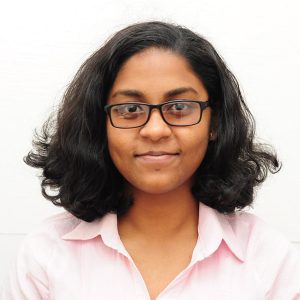VISUAL arts, in its many forms, provides a medium for people’s differences to be celebrated and can be used to foster reconciliation in Guyana, according to art adept and former Minister, Dr. Rupert Roopnarine.
“I think that what art does not do is limit; what it does is that it expands, it opens up [and] it makes us more amenable to difference,” Dr. Roopnarine said while speaking at a Public Lecture on art in Guyana.
According to Dr. Roopnarine, who is an art critic and has been involved in the creative field, the “struggle” of the artist is to create an experience of his/her community, and bring out something that reveals rather than conceals. In the local context, he explained that this means assimilating lived experiences with the plural society that Guyana is.
Sharing his own experiences, he noted that he frequented a space where artist Stanley Greaves and poet Martin Carter shared. And for him, those persons were embarked upon finding ways of expressing lived experiences in ways that celebrated the differences in Guyanese society. And these ways, he noted, were neither derogatory nor hostile.
“That is why I believe that art is a zone of reconciliation,” the man said, elaborating: “What art does is that it reconciles opposites, it reconciles people, it reconciles ideas, it can hold conflicting ideas in a single work and to me, that is the mystery and magnificence of it.”
As part of his lecture, he identified three recurring themes in Guyanese art: Landscape, Identity and the Universe. These themes, he noted, have characterised some of the greatest visual works by Guyanese artists but perhaps more importantly, have illustrated the lived experiences of various ethnic groups in Guyana in ways that could be related across the ethnic spectrum and even have a more universal appeal.
In fact, he spoke on the work of Stanley Greaves, and highlighted that this man’s work was “extraordinary”, and had been able to illustrate the theme of reconciliation.
“I believe to my mind that this is the ultimate power of art. It can hold apparently irreconcilable elements,” he said.
The lecture was part of the organised activities leading up to the grand biennial Guyana Visual Arts Competition and Exhibition (GVACE). This competition was launched in 2012 with the aim of giving recognition and support to Guaynese in the visual arts arena. It also aims to stimulate visual imagination.
Commenting more broadly on the presence of art in Guyana however, Dr. Roopnarine affirmed that for as long as there is a Guyana, there is also going to be art.
“There is great need for expressiveness,” he said, noting: “I have no doubt that it is alive and well and it is in fact exhibiting itself in communities and bottom houses.”




.jpg)



![Rupert Former Minister, Dr. Rupert Roopnarine interacting with the audience at his lecture on Art in Guyana [Adrian Narine photo]](https://guyanachronicle.com/wp-content/uploads/elementor/thumbs/Rupert-o9xb14jlxrp1uvuatrinbe6d4xl0dl6r61k46329ke.jpg)





